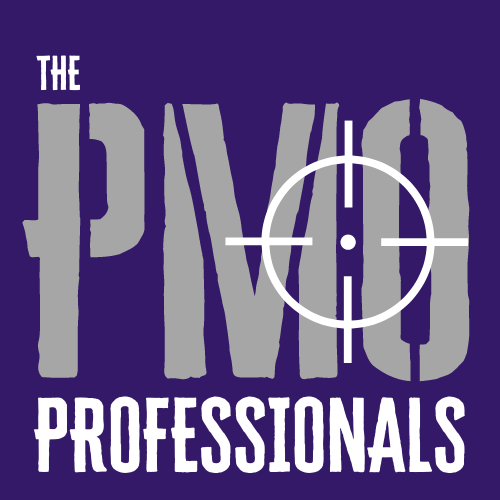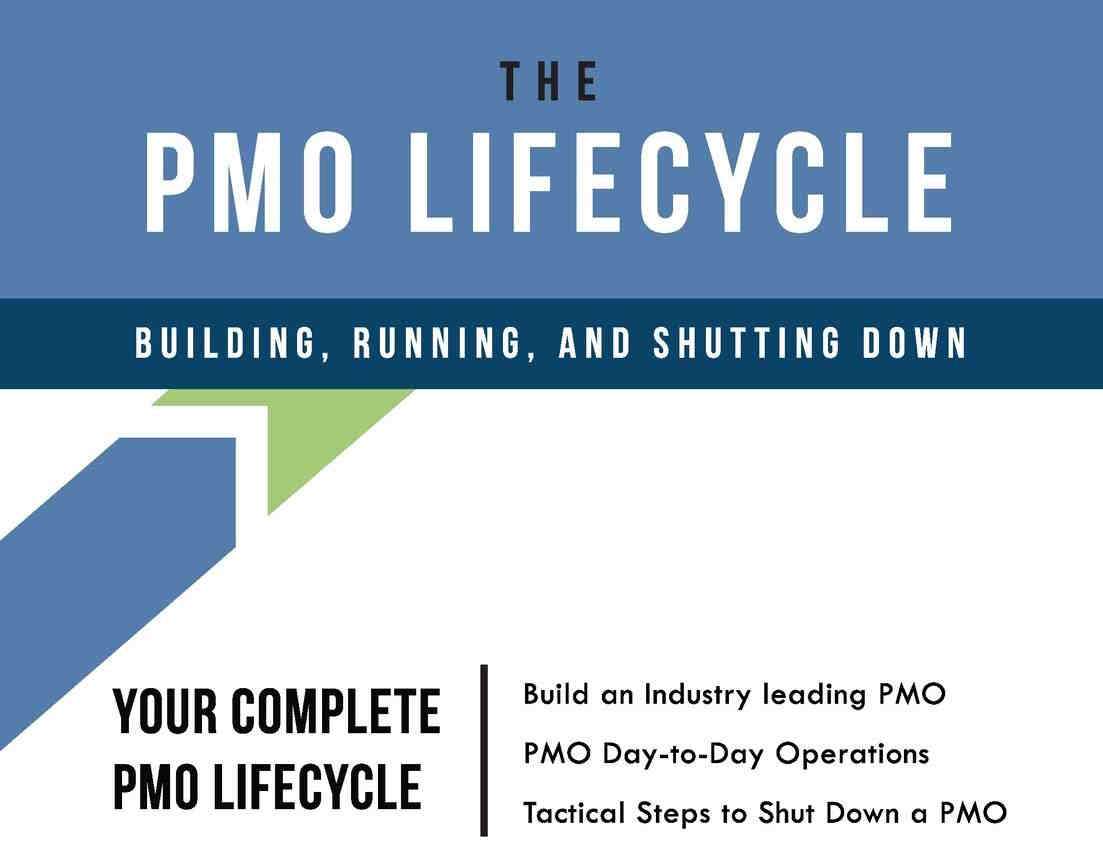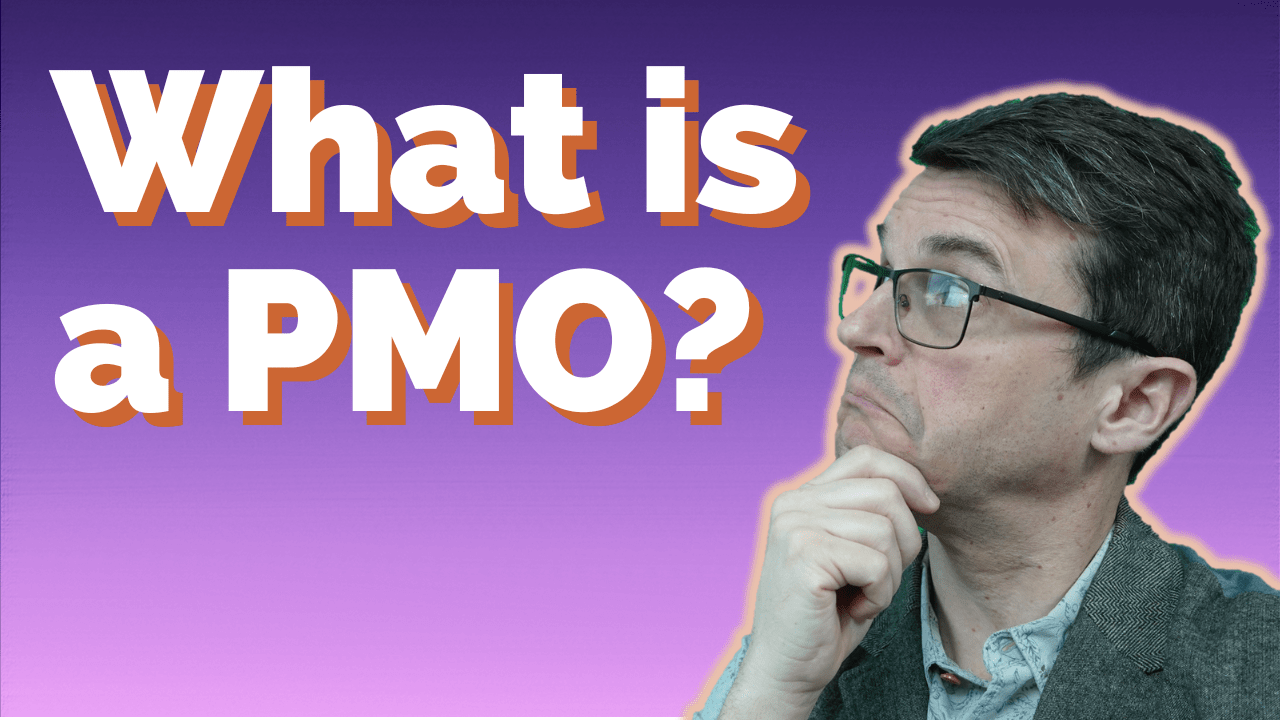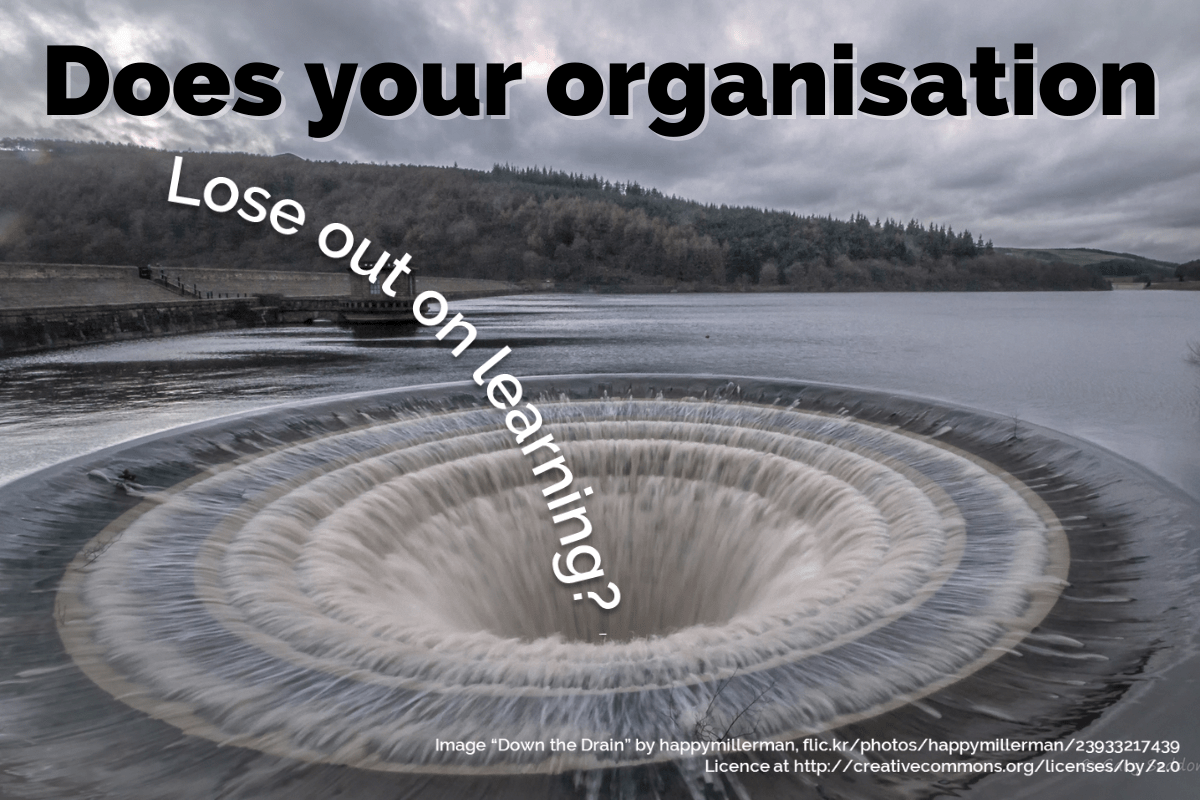A PPM tool is software designed to be an enterprise-wide, strategic solution which facilitates more effective project portfolio management. It’s a multi-million turnover industry, full of hundreds of options ranging from free and instantly accessible to costing thousands and taking months to configure and implement.
Gartner’s Magic Quadrant is regarded as the go-to source of information on the market for PPM software. We are bombarded on a daily basis with statistics, blog posts, webinars on why we MUST have a PPM tool and the benefits it will deliver! So off we go, to the conferences, the expos – to do our research. Maybe we even make some calls to vendors for demonstrations or post on social media to see who uses what out there and what the best solution really is…
Why is this must-have message about PPM tools so powerful?
The Evolve or Die message that PMO professionals regularly receive is a really powerful one. It’s been 10 years since Terry Doerscher and Mark Price-Perry told us that PMOs need to be more business-driven – the world has moved on again since, and now PMOs need to evolve again to maintain value to an organisation in the age of Digital Transformation.
Evolution is defined as the gradual development of something, but there’s a mismatch between what organisations need from their PMOs vs what those PMOs are able to provide with the tools they have. Many PMOs out there are still struggling to address the business-driven stage of evolution, so how can they evolve even further with just a spreadsheet?
Spreadsheets are great!
Now I’m not knocking spreadsheets – they are still one of the most versatile tools out there, and available to almost every single person who uses a computer for their daily work. When they arrived on people’s desks in the early 1990s they were truly revolutionary – just like the mobile phone which arrived shortly afterwards.
For PMOs that collect data around project status, finances, risks and issues, milestones – the time, cost and quality metrics of project delivery, or the “Iron Triangle” – spreadsheets are great.
For the organisations where regular reporting cycles result in presentation decks for monthly governance forums – where project status indicators are debated and actions issued for completion by the next meeting – there is no pressing need for a fully-featured PPM solution.
If I was still using the mobile phone I had in the 1990s, I would be struggling. Using a mobile phone to make a call is just one of the features that today’s devices offer – the apps that give us an overview of everything in one place, making sure we know where to be, how to get there, if we have enough money in the bank to pay while we’re there are the benefits… and it’s the perceived benefits of owning a smartphone that fuel the market for upgrades and drives innovation. How many of those 1990s mobile phone manufacturers are still big players in today’s marketplace?
The technology that we have in our homes and in our pockets now has revolutionised the way we live – and work. There are also benefits for organisations in having a holistic view of all change-related activities, rather than just focusing on delivery metrics for individual projects.
Answering the So What? questions
Changing the status quo, and the potential disruption that can bring to business as usual, are strategic investments for any organisation wanting to maintain a competitive edge in today’s marketplace. Project Portfolio Management is the term used to describe how we manage the mix of interrelated, dependent, and connected projects. PPM considers the big picture of all projects grouped together; past, present and future – and calculates the optimal prioritisation and sequencing of projects to maximise an organisation’s return on investment.
It takes weeks for PMOs operating with spreadsheets to produce reports that tell stakeholders what HAS happened on projects – and by the time the reports are reviewed (IF they are reviewed), the information is out of date and the response is SO WHAT?
This type of PMO is still having to focus on making sure projects accomplish goals on time and within budget, providing services focused on templates, reviews and progress tracking, and promoting consistency of process, terminology, roles and responsibilities.
So questions of PMO value and talk of “overheads” begins because stakeholders are actually asking these questions about the portfolio… questions that the PMO can’t provide answers to in a timely and efficient way using the tools they have. Many of these questions are forward looking:

Selecting, implementing and adopting the right kind of PPM tool at the right time can drive a PMO forward
Business cases have been successfully built and ERP systems delivered; HR functions are successfully building cases for better tools for talent management. Sales has CRM.
Why have these transformational activities succeeded, but still so many PMOs struggle to build a business case for portfolio management and PPM tools?
PMOs need to change the conversation around having the tools to do their jobs effectively
So how does the PMO build a compelling case for investment in a PPM tool?
The finance, HR and sales teams focused on this when they prepared their business cases -providing value through actionable insights that will drive the business forward.
it’s not about how PMO could save time or resource, or how the project managers will submit their data in the right way – it’s not even about providing more information.
it’s about how insights into early warnings about potential project failure can be surfaced, highlighted and quantified in strategic terms;
About how the impact of skills gaps across the organisation to implement change can be identified and addressed early based on different portfolio scenarios.
It’s about being forward-looking. Then we need to have that conversation again about how spreadsheets are just not going to cut it any more.
Maybe it’s because before I moved into PMO, I spent 15 years as a business analyst working with operations functions like finance, sales, and marketing.
I was usually brought in by senior executives, not the functions themselves.
I listened to their frustrations, their questions, their business problems. I took time to understand their markets, the environments they operated within and their strategic goals.
Then I went out to the functions, to understand how they worked, what data they already had, and how we could bring all the aspects together to ANSWER THE QUESTIONS THAT THE SENIOR EXECUTIVES HAD.
It was always driven by the questions. I called it “working backwards”.
- What business problem are we trying to solve?
- What will have the biggest impact on stakeholders?
- What will drive the organisation in this direction?
Before we go any further, some words of caution…
If the success of core PMO activities involve consistency of process, terminology, roles and responsibilities – and this hasn’t yet been achieved or isn’t working effectively, then these issues will only be magnified once a PPM tool is introduced.
PPM tools are NOT the magic bullet that will solve all your process-related problems.
In the same way that we are now discussing what is and isn’t suitable for Robotics Process Automation or RPA, we need to discuss what is and isn’t ready for a PPM tool.
Technology provides a way to enhance and improve the efficiency and effectiveness of a process or activity. But they have to be the right processes, processes that are ready for automation.
If poor or inefficient business processes aren’t working well already, why do you think they will work better once technology is involved?
There are steps that need to be taken BEFORE diving into the market for PPM tools.
The first step is about being honest with the drivers for change, and acknowledging that poor processes will NOT be fixed by a tool; it’s about taking a look at what you’ve already got in place, understanding what is and isn’t working well and addressing those before adding the complexity of a PPM tool.
The other steps are about the importance of identifying WHO needs to be involved, and to plan change management activities to bring them along on the journey; Thinking about WHEN to introduce the solution, that best fits the organisation as a whole; The impact of the HOW; if its just PMO working on it, if senior management don’t champion the cause, if time isn’t devoted to understanding new ways of working – does that really promote success?
Only then should you start thinking about which PPM tool could work best for your organisation.
What’s the impact of approaching a PPM tool implementation in the “wrong” way?
I’ve worked on several PPM tool deployments, and one of my biggest frustrations is caused by the IT-led approach taken when implementing them. This isn’t helped when project management and PMO reside in IT.
The solution has been decided and the project mobilised to deliver the chosen software. It’s too late to ask why that particular tool has been chosen, too late to determine if the perceived problems it will solve are the organisational problems that really need solving.
Process improvement, organisational maturity or change management are unwelcome distractions for a technical project tasked with delivering a piece of software on time, within budget and with a scope determined by the capabilities of the chosen solution.
There is an expectation that the vendor will provide best practice guidance and insight into how to best use the tool; these vendors are often a) software sales people with no practitioner experience and b) configuration specialists focused on getting the software working in the technical environment.
We risk ending up with an unhappy project manager trying to juggle even more demands.
With most PPM tool implementations, the impact is on the project managers, and the others that need to INPUT data; with a poor PPM tool implementation, the project manager has to learn a whole new way of doing things that:
- They didn’t enjoy doing anyway
- Already take up far too much of their time
- Their training (if they had any) didn’t cover
If your PPM tool implementation is based around poor processes that add pain, you still won’t be able to answer those stakeholder questions the business case was built on – and you won’t be able to provide any of the project data you were originally reporting either!
“There can hardly be a firm that has not invested, always significantly and often hugely, in IT systems, the goal of which is to provide a better understanding of the market and control the company… Despite this spend, many firms feel that they are not achieving the outcomes they sought.”
– Smith & Raspin, Creating Market Insight (London: Wiley, 2008)
I like to ask anyone that has already implemented a PPM tool what their answer is to this; The extent to which the transformation satisfies the need for which it was undertaken
There are a variety of responses but they are often saying similar things – not quite hitting the spot.
In many cases they’ve gone back to using spreadsheets alongside their PPM tool to plug the gaps.
Part of this is because when PPM tools first emerged 10 years ago they were designed for enterprise level deployments similar to CRM and ERP. It was more about leveraging technology to combine data from disparate sources into one place. About getting organised, structured data IN to provide information – and not necessarily about what would be most useful coming OUT.
There are many clients I speak to who have had a PPM tool in place for 18 months or so, who are not getting the benefits they expected. They frequently mention the vendors “not being interested” beyond the implementation phase, of feeling like they have an “expensive time sheeting system”; they’re talking about supplementing it with another tools or even dumping it all together because they are disappointed it hasn’t solved resource management or isn’t escalating the right risks. Their expectations haven’t been met.
Gartner have also managed to articulate this with their Hype Cycle methodology – a lot of organisations who are 18 months into their PPM tool journey find themselves in the Trough of Disillusionment.
The reports and dashboards that PPM tools typically enable the information we have captured to be presented pictorially; they enable monitoring of data quality, information structures, usage metrics, who made the last updates and when.
They provide a view of what HAS happened. The outputs of a PPM tool can inform further analysis, but will not be transformed into insight by the PPM tool alone. That’s up to the PMO – and that’s the value add.
As PMOs, at best we are getting to information about what HAS happened. What we need to be doing is using lessons learned from previous projects and the information available on current projects to highlight;
- what is likely to happen if things continue as they are
- what to change to affect a different outcome – which is where the real power lies
We need to be using all that data, information and knowledge to provide the map that gets our stakeholders to ACTIONABLE INSIGHTS.
I’m not convinced we are doing this in PMOs today.

I like to think about the PMO as the team that completes the jigsaw puzzle of change, by moving the pieces around to build the full picture.
Before you start a puzzle, do you count how many pieces you have, to make sure you are not going to be wasting your time before you start? What happens if pieces are missing? Do you start with the corners, the edges to give you a structure first? Would you attempt to complete a jigsaw puzzle without the picture on the box to guide you?
Are the two people to the side directing the PMO – or are they having a-ha! moments as the picture emerges?
If we think about the puzzle pieces as DATA and the picture on the box as INFORMATION, to complete the puzzle we need to use our KNOWLEDGE of how to do it – and our WISDOM to remind us that just because a piece fits somewhere, it may not actually be in the right place!
- PPM tools will provide a place to record DATA
- PPM tools will enable that data to be organised into INFORMATION
- A PPM tool may even enable organisational context to be applied to provide KNOWLEDGE
But then what? How do we get to insight, to actions and to value? How can we complete the jigsaw puzzle?
Only PART of creating insight involves technology – PPM tools provide a way to enhance and improve the efficiency of effective processes or activities, but they are not a replacement for the other services that PMOs still need to provide
Earlier in this post was a quote from a book published by Wiley in 2008, Creating Market Insight by Smith & Raspin.
The book explores the differences between organisations that manage to turn data into insight and value, and those that don’t – making the point that even in 2008, executives have access to huge amounts of computing power with which to make sense of the market but organisations still become extinct due to lack of ACTIONABLE INSIGHTS.
The Cranfield School of Management – a top choice for MBA students in the UK – created a model to illustrate this transformation process, called the “Data-to-Value Wheel”. There were significant contributions made by this work towards the understanding of how data-to-value transformations work;
- The difference between KNOWLEDGE and INSIGHT
- Defining insight as only that knowledge that is an organisational strength; of all the knowledge an organisation may have, only that knowledge which meets the criteria of an organisational strength may truly be called insight
- Value creation is the end point of a chain of transformations
- Failure to create value could be due to a break or weakness at one or more points in the chain
There were actually 10 factors identified by the Cranfield work that influence how effective the data-to-value process is; if you want to know more about them then the book is still available!
A similar piece of work in 2004 by Cranfield’s Centre for Business Performance focused on Extracting value from data – the performance planning value chain or PPVC, which provides “a systemic process for using data to enhance decision‐making, bringing together a vast array of tools to extract value from data and focus efforts on what will add real value to the organisation.”
The PPVC is subsequently covered in the Handbook of Corporate Performance Management published by Wiley in 2011.
















